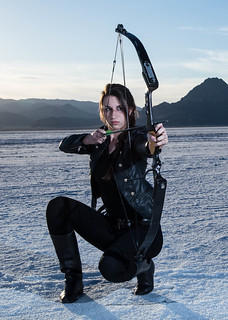It's been a while since I wrote this post about gender diversity in games. I remember a certain pushback from members of the game development community who felt somehow that a call for gender diversity, or any kind of diversity, was impinging on their personal expression. They felt like they shouldn't have to sacrifice their creative vision for the sake of diverse representation.
However, I didn't quite see how deciding that a bit-part NPC Doctor #2 would be a female doctor or composing a crowd scene to have more female faces would make much difference to their original vision. It's simply about reflecting the real world and in the real world, there are female doctors and there are females in crowds. Yet, in the strange skewed zone of pretend worlds, as the Geena Davis Institute on Gender in Media has shown, females are underrepresented. This may not seem like a big deal, but it makes an impact on the psyches of young girls, who subconsciously get the message that females are invisible.
On the flip side, when there are empowering female heroines in media, young girls respond with emulation. Because of the popularity of The Hunger Games series, Brave, and Game of Thrones, the sport of archery has seen a boost among teenage girls. Archery memberships purchased by women shot up by 105% in 2014. As the Geena Davis Institute says, "If she can see it, she can be it."
 |
| Photo by Hayden Beaumont |
Their research showed that in 2015, male characters generally spoke twice as much as female characters and received twice as much screen time. Specifically, in box office hits with male leads, male characters spoke and appeared three times more often, and even in films with female leads, male characters spoke and received as much screen time as female characters. In films with both female and male leads, male characters still received significantly more screen time.
But was this because male characters bring in more box office revenue? Not exactly. On average, 2015 films with female leads earned 15.8% more than films with male leads. Films with both female and male leads earned 23.5%
more than films with male or female leads alone.
I'd like to emphasize that no one thinks that creators are purposefully creating male-dominated crowd scenes or actively trying to exclude female characters. Rather, it's a subconscious societal bias that we as a community can start to notice and rectify.
Sande Chen is a writer and game designer whose work has spanned 10 years in the industry. Her credits include 1999 IGF winner Terminus, 2007 PC RPG of the Year The Witcher, and Wizard 101. She is one of the founding members of the IGDA Game Design SIG.
No comments:
Post a Comment